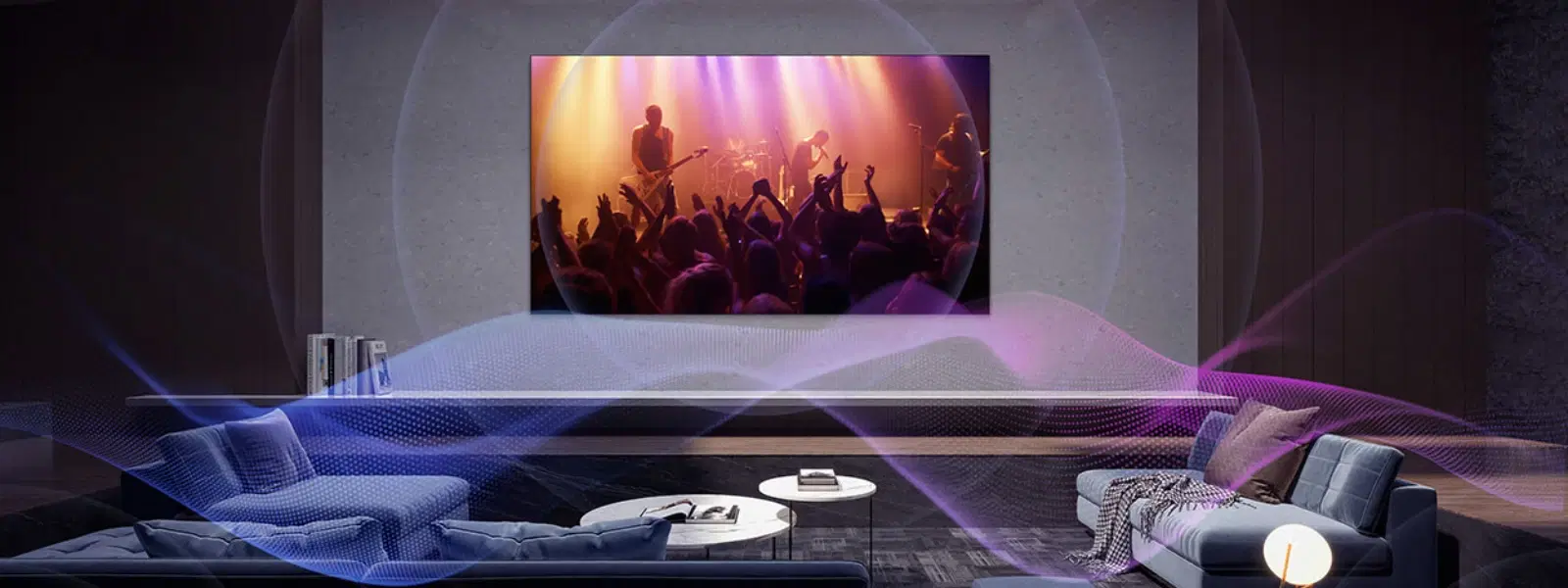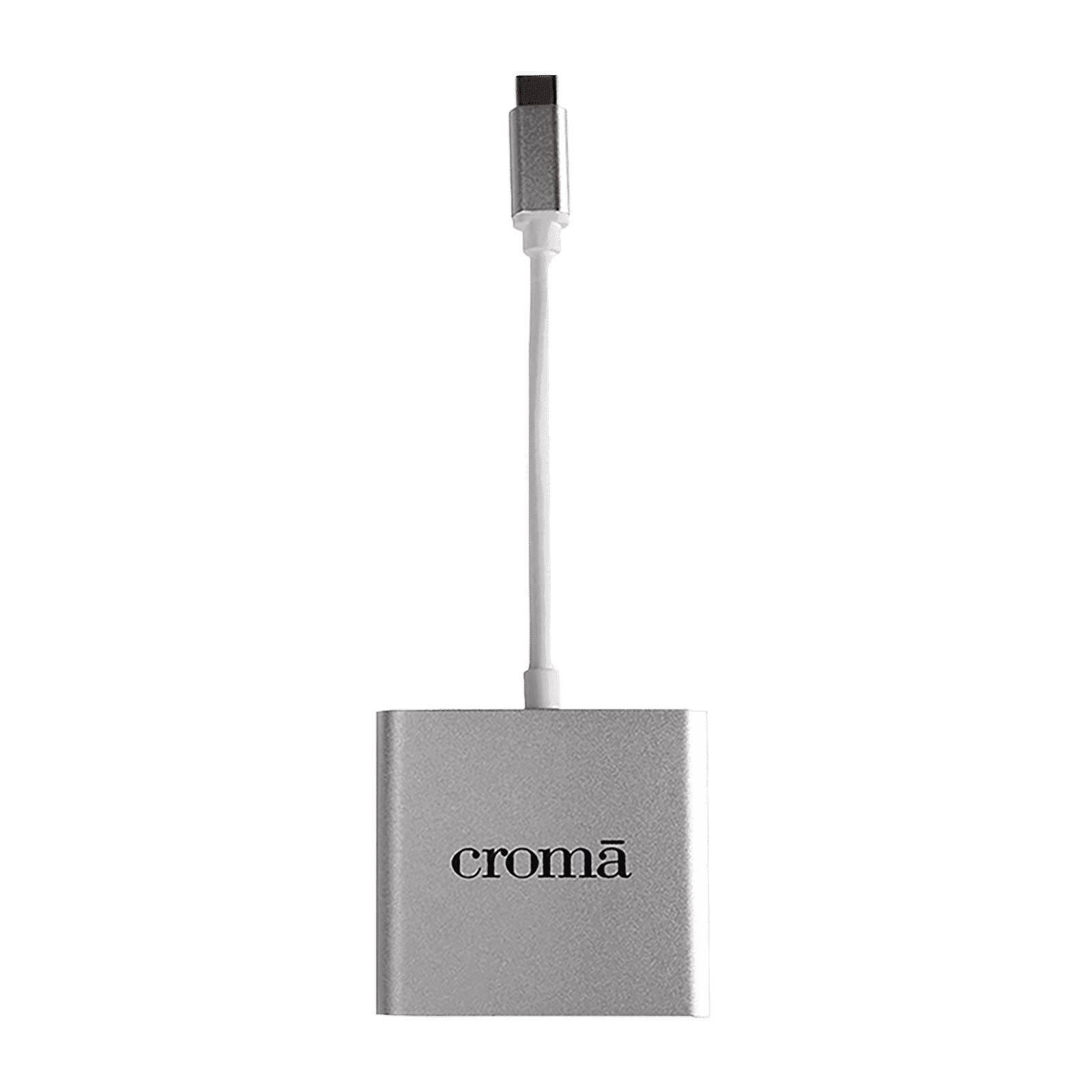
Consumer Electronics
•03 min read

Buy Croma USB 3.0 Type C to USB 2.0 Type A, USB 3.0 Type C, HDMI Type A USB Hub (High-Quality Material, Silver) online at best prices from Croma. Check product details, reviews & more. Shop now!
Imagine effortlessly watching your favourite movies or accessing personal media files directly from your USB device on your smart TV. This guide explores the process of connecting USB devices to smart TVs, covering everything from compatibility concerns and file format requirements to hands-on troubleshooting tips. By the end, you'll be empowered with expert insights on how to connect USB to smart TV, understand smart TV USB compatibility, and even optimise your device for a seamless viewing experience.
Smart TVs have USB ports designed to easily interface with external devices such as flash drives and external hard drives. These ports allow you to play media files, transfer personal photos, or even watch recorded live TV depending on your smart TV's features. Primarily, these USB connections are used for media playback and file transfers, making it convenient for tech enthusiasts, young professionals and families alike.
For optimal performance, your smart TV supports several common file formats including MP4, MKV, and JPEG. The ability to read and play these files depends on whether your USB drive is correctly formatted. Typically, formats such as FAT32 and NTFS are widely used. It is important to check your TV's manual to confirm which format works best, ensuring uninterrupted media playback.
Before connecting, ensure your USB drive is formatted for optimal performance. Format it in either FAT32 or NTFS as per your smart TV’s requirements and organise your media files into clearly labelled folders. This simple preparation can make navigation and media access much more intuitive.
Identify the USB port on your smart TV, usually found on its side or back panel. Once located, plug your correctly formatted USB device firmly into the port. The process to connect an external drive to TV is simple, ensuring anyone can enjoy a hassle-free experience without extensive technical know-how.
After connecting, switch your TV’s input mode to USB using your remote control. Navigate through the TV's menu to locate your media files. Selecting and playing your favourite movies, images, or music files becomes an effortless task, allowing you to sit back and enjoy your content immediately.
Occasionally, your TV may not recognise your USB device. This can happen if the USB is not properly formatted, if the file format is unsupported, or even due to a minor hardware glitch. A simple troubleshooting step is to try reconnecting your device or using an alternate USB port available on your smart TV.
If your USB device still isn’t detected, consider restarting your TV and checking all connections. Updating your TV firmware can also resolve underlying compatibility issues. Small adjustments like these can resolve many common frustrations with USB port smart TV usage.
In instances where your smart TV lacks a dedicated USB port, explore alternative methods such as using HDMI adapters or streaming devices to connect your media. This ensures you are never without options to watch movies from USB on your smart TV.
Moving media from your computer to your USB device is straightforward and paves the way for easy content playback on your smart TV. Consider using reliable media management software to maintain organised libraries, which can significantly enhance your viewing experience.
For film enthusiasts, ensuring that your movie libraries are well organised and appropriately formatted is key. Enhance your experience by checking subtitle and resolution settings, customising playback to suit your preferences.
Pro Tip: Ensure Seamless Playback
Did you know? Formatting your USB drive to FAT32 ensures compatibility with most smart TVs. However, for larger file sizes, NTFS may be required. Always check your TV’s specifications to avoid any playback interruptions.
Beyond media playback, leveraging USB storage can significantly expand your smart TV’s functionality. External drives can be used to record live TV (if supported) or store larger media libraries, providing a robust solution for maintaining a digital media centre at home.
For a smoother performance, high-speed USB devices are recommended, particularly when playing high-definition files. Taking care to avoid common pitfalls like overheating or power issues ensures that your setup remains both efficient and reliable.
Ensure the USB device is formatted correctly, typically in FAT32 or NTFS, and confirm that your media files are in a supported format. Restart your TV and reconnect the USB device if it is not detected.
Locate the USB port on your smart TV, plug in the USB device, and switch the TV input mode to USB. Follow the on-screen instructions to access your files.
Simply plug your USB drive into the TV’s USB port. Use your remote control to navigate through the USB input mode and select the files you want to play.
Connecting USB devices to smart TVs opens up a world of possibilities for media playback, file transfers, and extended storage management. By understanding the compatibility requirements, following a structured step-by-step guide, and employing practical troubleshooting tips, you can fully unlock the USB port smart TV usage benefits. Embrace these expert insights and optimise your entertainment experience while enjoying the added perks such as NeuCoin rewards and exclusive benefits on Tata Neu, ensuring not only ease and convenience, but also a rewarding shopping journey.